Click Here for Private Services Enrollment Form

Dog Puppy Behavior Training Help
How's Bentley Dog and Puppy and Behavior and Training and Help
How’s Bentley Mini Course Syllabus – Beginner Course
For all friendly, vaccinated, puppies and dogs 16 weeks or older
COURSE FEE & LENGTH – $85, 3 weekly sessions, 55 minutes each
By Reservation only:– Please review this checklist to see if group courses are best for your dog
DOGS – 3-10 dogs per class – all friendly, vaccinated puppies and dogs over 16 weeks may attend.
PEOPLE – Adults 18 and over may register and one adult will handle the dog. All family members are encouraged to attend. Teens and children can assist the adult handler.
METHODS – Dog friendly, rewards based teaching methods, no leash jerks
INSTRUCTOR – Alan J Turner, owner of How’s Bentley, is the instructor. Alan is a companion animal behavior counselor and trainer with a specialization in canine behavior. Alan is a certified Syn Alia Training Systems Trainer, Lay Level 1. Alan is a member of the Association of Pet Dog Trainers. Please Visit these links to learn more about Alan.
Association of Pet Dog Trainers
COMMANDS – look, come, sit, down, stay, go-to-place
REACTIVE DOGS – Group Course setting is not suitable for aggressive, reactive, or fearful dogs. Please contact Alan about private sessions.
BRING TO CLASS – copies of current vaccination records, signed Group Mini Course Enrollment Form, small food treats, chew toy, water bowl, hungry, exercised dog; Sessions 2-3 dog bed, high value long lasting chew treat
EQUIPMENT – Leash: 4 to 6 foot nylon, leather, poly, or cotton lead – Collar: any neck collar, head collar, or harness is acceptable as long as the dog is not choking and the dog cannot escape from the equipment. Weeks 2-3, bring a dog bed, rug, kennel pad, something to use as the “Place” for Go-To-Place
REGISTER – – Contact Brown Dog Lodge to reserve your spot.
————————————————————————————————
Behaviors for Beginner Mini Course (click words below for detailed instructions):
Look (Attention on cue / while standing), Capture Sit, Target Here (optional Whistle Come), Lure Down (or Capture Down), Stay, Go-to-Place
————————————————————————————————————
Preparation for First Class – Lecture Notes
Please select the link below to view helpful articles in preparation for the course. AA3 and AA4 are the most important!
https://dogand.com/category/dog-training-obedience/start-here/
————————————————————————————————————
Here are the steps for teaching a dog anything you want.
————————————————————————————————————
SYLLABUS ***************************
1st Class Session- Exercises
Condition an instant reward marker.
Teach attention on cue – while standing.
Teach your dog to come bump your target (Here).
Teach additional commands for the same behavior (teach the word sit).
Video Demo
https://dogand.com/category/dog-training-obedience/training-video-demonstrations/
Obedience Training –> Video Demo
Here’s a video demo of a puppy doing “look”, “here”, “sit” and “down”. My client is using a clicker as the conditioned reward marker. When you string several commands, you mark each “success”, but don’t deliver food treat after every mark. In this video, my client is using a clicker for the reward marker.
HOMEWORK WEEK ONE
Here’s a goal for this week. Hold at least 5, 60 second, practice sessions every day. 10 would be better! 🙂 Practice Look, Here, Sit
Wait 10 minutes minimum between these short sessions. You could do all 5 within one hour, but it’s better to sprinkle the sessions throughout the day- or split between AM and PM.
During these short (1 minute) sessions, practice “sit for folded arms” and “attention on cue”.
Problems with “Sit for Folded Arms”? CLICK HERE for TROUBLESHOOTING TIPS.
CLICK HERE for a Training Log. Print the log so you can keep a record of your practice sessions.
You will mark each “look” or “sit” with your reward marker (X is one of my favorite reward markers). And you follow the X with some version of FAT.
The first couple of days, give your dog a small food reward (after you mark the instant of success) 3 out of every 5 times you mark. As your dog learns the commands, you can discontinue the use of the marker.
After 2 days, experiment with the reinforcement schedule. Use a variable intermittent schedule of reinforcement; give a food reward sometimes, and give attention (praise, yee haaas, fun noises) or touch without the food treat, other times. Mix it up!
Practice in 4 different locations inside your home. Practice in 2 different locations outside.
2nd Class Session- Exercises
Practice: Look, Here, Sit
Introduce Stay, Go-to-Place
Discussion – Making Behaviors Reliable
HOMEWORK WEEK TWO
Practice: Look, Here, Sit, Down, Stay
Hold 5 daily, 2-3 minute practice sessions. Practice in 4 different locations inside your home. Practice in 2 different locations outside.
Optional – Teach: Whistle Come
Optional – Teach and practice: Inside / Outside
3rd Class Session- Exercises
Practice: Look, Here, Sit, Down,Stay, Go-to-Place
Practice: Attention while standing – without cue
Discussion: Real Life Applications
Instructor, Alan J Turner, SATS LL1
How’s Bentley – Memphis, Germantown, Collierville TN
Group Dog Obedience Courses
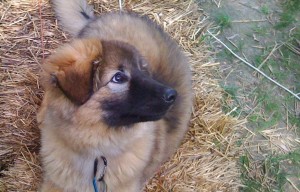 Contrary to popular beliefs, the process of house training is largely governed by a naturally occurring, classical conditioning process. I propose we assign a more accurate, 21st century, label for house training. Let’s name it “potty area conditioning”!
Contrary to popular beliefs, the process of house training is largely governed by a naturally occurring, classical conditioning process. I propose we assign a more accurate, 21st century, label for house training. Let’s name it “potty area conditioning”!
All of your actions will alter the natural process of “potty area conditioning”.
You may hasten the process, delay the process, or unknowingly teach (condition) your dog to eliminate inside.
TWO SIMPLE RULES:
Provide access to desirable area.
Prevent potty accidents inside.
If one always provides their dog the opportunity to eliminate in desired locations and never ever gives the pup access to eliminate in undesirable locations, potty area conditioning will occur without any other input from people.
The dog will associate the desirable areas with the internal relief gained by elimination. The dog will naturally seek out the desired location
.
The type of flooring or ground cover is an important dynamic for potty-area- conditioning.
Many people report their dogs often choose to eliminate on a specific types of ground coverings. This is because a “conditioned” dog automatically seeks out the same type of area that he used most often in the past.
For example, if your pup is always led to a gravel parking lot, he will seek out gravel-like surfaces whenever he feels the pressures associated with the need to eliminate. If he is always led to grassy areas, he will develop a natural preference for grassy areas.
An unsupervised dog that eliminates inside your house will naturally form associations with that type of flooring. In addition, the dog will be attracted to use the same area because of the odors of the soiled areas. The dog will return there to eliminate next time he or she has a need to potty. Yikes!
Happy Training!
Alan J Turner
21st Century Dogs
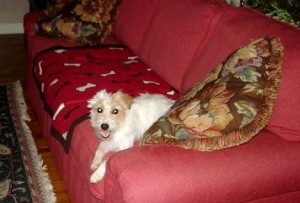 Every day, I speak with clients about meeting their dogs’ basic needs. Most of us assume our dogs are getting plenty of exercise and stimulation when the dogs are alone (or with other dogs) in a large fenced area. The dog is in the great outdoors, so she must be getting enough exercise, right?
Every day, I speak with clients about meeting their dogs’ basic needs. Most of us assume our dogs are getting plenty of exercise and stimulation when the dogs are alone (or with other dogs) in a large fenced area. The dog is in the great outdoors, so she must be getting enough exercise, right?
Wrong. This is not usually the case, unless you have a turbo Jack Russell Terrier, like the one pictured in this post. Crisco hunts and chases critters for hours. Occasionally she’ll dig, because, she’s a terrier! Do not be surprised when your terrier redesigns your flower beds or digs up a shrub. The word terrier comes from the Middle French terrier, derived from the Latin terra, meaning earth. Get it? 🙂
Some dogs do know how to entertain themselves when alone in the yard.
All dogs, and especially guarding types such as German Shepherd Dogs, are at risk for refining territorial aggression if their primary jobs involve constant watching and barking at people and other dogs that pass by the yard. Yikes, that can’t be good!
Beagles and hounds may bay or bark for hours on end.
Labrador retrievers and other breeds dig, destroy fencing and furniture, chew low voltage air conditioning wires, lick bar-b-q grills, dismantle wooden decks, scratch back doors, run along fences and bark at the dogs next door, et cetera.
Some of my clients keep their dogs in the back yard because the dogs are ill mannered inside the house. The same dogs are ill mannered in the back yards.
If you want to reduce normal, unwanted behaviors, you’ll need to meet your dog’s basic needs. Make a list of behaviors you would like from your dog. Learn about training methods and teach your dog. Take your dog for daily walks in the neighborhood.
You can have a rude dog who makes your life miserable, or you can have a well mannered pet. It’s your choice. Visit other pages on this dogand site to begin your adventure.
Happy Training!
Alan J Turner
How’s Bentley – Memphis TN – Canine Relationship Solutions
Private and Group Dog Obedience – Memphis, Collierville, Germantown, Bartlett, Cordova TN
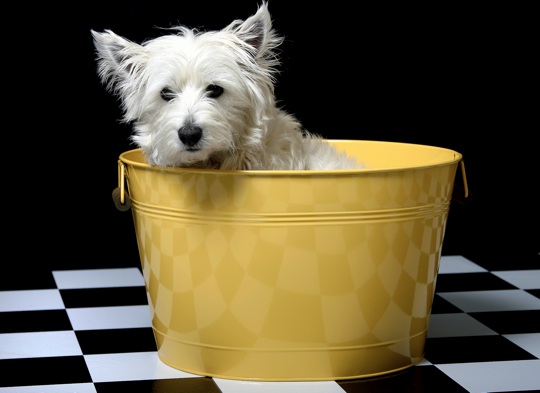
Alan J Turner, Companion Animal Behavior Counselor & Trainer – Canine Specialization
Private and Group Dog Training in Memphis, TN
Owner: How’s Bentley
 I always ask my clients to practice with their dogs during short sessions throughout the day. For puppies and dogs that are learning look and sit (the first 2 commands), I recommend 5 sessions each day, for 60 seconds per session.
I always ask my clients to practice with their dogs during short sessions throughout the day. For puppies and dogs that are learning look and sit (the first 2 commands), I recommend 5 sessions each day, for 60 seconds per session.
As the dog is introduced to more commands, such as here, stay and down, the sessions will be longer. How you end the longer sessions makes a difference!
Cool down before ending a session. During your short teaching sessions, respect the fact that learning a new task or raising the difficulty for a task (for example- practicing ‘stays’ with more distractions or increased duration) can be somewhat stressful for your dog.
I think it’s somewhat impolite, rude, or disrespectful to “push” your dog’s performance to a very high level and then immediately end the session.
To give your dog a break, end each session with a couple of easy behaviors that your dog already knows. After teaching, hold a play session or go for a walk.
Following this recipe will keep your dog relaxed about learning. He will anticipate the next session with joy! Your main goal is to teach your dog so make it easy for him/her to be successful!
Happy Training!
Alan J Turner – Companion Animal Behavior Counselor and Trainer, Canine Specialization
How’s Bentley – Memphis, Collierville, Germantown TN
21st Century Canine Relationship Solutions
Private Dog Training in Memphis, Collierville, Germantown, Cordova, Bartlett TN
Reactive Dog Specialist
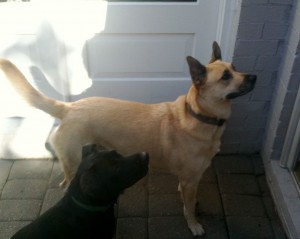 Animals that already own rewards will not perform behaviors to receive the same rewards they already own.
Animals that already own rewards will not perform behaviors to receive the same rewards they already own.
Animals that receive rewards without any behavioral requirements will not examine and modify their own behaviors in order to receive the same rewards they already have.
This means dog training success via positive reinforcement depends on your ability to
Identify – Manage – Deliver – Withhold – Add – Subtract
Rewards
Happy Training!
Alan J Turner – Companion Animal Behavior Counselor and Trainer, Canine Specialization
How’s Bentley – Memphis, Collierville, Germantown TN
21st Century Canine Relationship Solutions
Private Dog Training in Memphis, Collierville, Germantown, Cordova, Bartlett TN
Reactive Dog Specialist
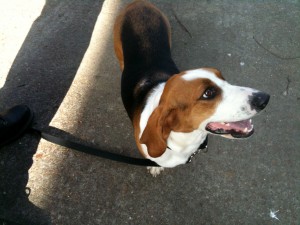 Sometimes I see clients whose dogs were previously house trained, but recently started eliminating inside. The causes can range from medical or dietary issues, attention seeking behaviors, to anxiety and fearful behaviors. You’ll need to determine the root cause before you can fix it.
Sometimes I see clients whose dogs were previously house trained, but recently started eliminating inside. The causes can range from medical or dietary issues, attention seeking behaviors, to anxiety and fearful behaviors. You’ll need to determine the root cause before you can fix it.
Here is the inappropriate inside elimination questionnaire that I use for remote house training consultations. I use this form to determine the root cause.
 Print This Post
Print This Post
______________________________________________________________
Inappropriate Elimination Worksheet– for dogs that were previously house trained and inside elimination represents a change in behavior.
Have medical tests been conducted since the onset of the inappropriate elimination behavior(s) for the specific goal of identifying or ruling out a medical cause(s) for the behavior(s)?
Yes No
How long has the problem behavior been occurring?
__________________________________________________________________________
How often does the behavior occur?
______________________________________________________________________________
Is the number of incidents increasing in frequency? Yes No
Behavior occurs only in the (visible) presence of persons yes no
Behavior occurs only in the absence of persons: yes no
Behavior occurs both in the presence of and in the absence of persons: yes no:
Were there changes in the external environment that coincided with the onset of elimination disorder? (i.e. new/remodeled home, moved furniture, installed fencing (including ‘invisible’ fencing), added room mate, schedule change, added pet, lost pet, lost room mate, etc.)
Yes No
If yes to above question, please explain.
______________________________________________________________________________
______________________________________________________________________________
Was there a change in dietary and elimination environment at or after the onset of the behavior? (type/brand/amounts of food recently changed, water consumption change, location of outside area used for elimination, willingness to go outside, etc.) Yes No
If yes, please explain._______________________________________________________________________
______________________________________________________________________________
Are there any other behavioral changes you have noticed at or after the onset of the problem elimination? (destructive behaviors, barking, mounting, object stealing, tail chasing, shadow stalking, storm phobia, firework or noise phobia, eating non-food items, etc.) Yes No
If yes to the above question, please explain.
______________________________________________________________________________
______________________________________________________________________________
Does the problem behavior occur more often in any particular location(s)? Yes No
List area(s) of most recent problem elimination and flooring type. (i.e. inside crate in den, kitchen on tile floor, back bedroom on carpet, living room curtains on carpet, cabinet in kitchen on tile floor, etc.)
______________________________________________________________________________
______________________________________________________________________________
Please check the type(s) of elimination occurring inside. Urination Defecation
If defecation selected in previous question, circle the consistency of stool.
Hard Soft but firm Firm then partially liquid Diarrhea Variable
Will the dog readily walk outdoors for a walk, or to play?
Yes No
Will the dog readily eliminate outdoors –on or off lead -in the presence of traffic, strangers, other dogs, loud noises, in bad weather, rain, cold, or other distractions?
Yes No Maybe _________________________________________
Where does the dog eliminate outside? List area and ground type. (i.e. back patio on concrete, back yard-anywhere on grass, backyard in designated area on grass, backyard on grass or concrete, during walks on grass, during walks on street, etc.)
______________________________________________________________________________
Does the dog eliminate inside regardless of schedule of outside exercise/outings and may eliminate immediately after you return indoors?
Yes No
Does the quantity of inside-the-home excretions indicate full-fledged elimination? Yes No
Are there numerous small amounts of urine deposited inside? Yes No
Please list any additional information you feel is relevant to the inside elimination problem behavior. Thank you.
______________________________________________________________________________
______________________________________________________________________________
______________________________________________________________________________
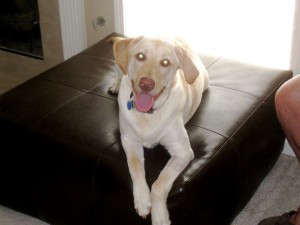 Of all the methods to teach a dog to lie down, capturing is the easiest, but it is seldom used because people do not understand or believe it will be effective.
Of all the methods to teach a dog to lie down, capturing is the easiest, but it is seldom used because people do not understand or believe it will be effective.
Capture is when you set up the environment for the behavior to occur, or just wait for the dog to perform the behavior, then you mark and deliver a treat. You don’t say anything, or offer a food lure, or provide any other input before the dog performs the target behavior.
Another reason my clients are hesitant to try and capture the down is because most people are determined to insert the word “down” when first teaching the behavior.
Telling dogs “down” does nothing to help the dogs learn the behavior. If anything it sends the dogs misinformation, because most people repeat the word, as if the word will help the dog to lie down.
Once the dog learns the behavior, you can slip the cue or command into the sequence, immediately before the dog performs the behavior. You’ll teach the dog the behavior first, then you teach the dog a command for the behavior.
You will need to condition a reward marker to use the capture method. If you are not familiar with reward markers, or capturing behaviors, please visit this page to learn how to condition an instant reward marker, and capture sit for folded arms, BEFORE you capture down.
Dogs sit numerous times every day, therefore “capture sit for folded arms” is very easy and effective. The exercise is as much a teaching exercise for the handler as it is for the dog. The handler learns about timing and how to teach a dog without a food lure, and without offering any physical input. The dog learns that he or she “makes” the marker occur. Once a dog understands this concept, you are ready to capture other, less frequent behaviors.
Assuming you have conditioned a reward marker, here are the steps to capture down. Teach down when your puppy dog is more likely to lie down, such as late in the evening or after exercise.
I like to do this when I am seated and watching TV, because I am lazy. 🙂
With your dog in the same area as you, you watch and wait for the dog to lie down, you mark the instant the dog’s belly touches the floor. Then toss a food treat on the floor, in between your dog’s front legs. Do this several times during a 2 hour period.
Do not speak to or touch your dog before, or immediately after he or she lies down. The only relevant events are belly touch floor, sound of the marker, food treat.
It may take more than one session of capturing the down before your dog catches on.
You can add the verbal command after your dog learns the behavior. You’ll know when your dog has “got it”. He or she will come over to you and plop down. When you notice this, do not mark the belly touch, just look at your dog. If your dog looks at you with that “hey stoooopid, I did it, where’s the marker and treat?”, then you can speak the word down, before the dog lies down. Repeat a few times, but now say the word “down” before your dog lies down. There you have it!
Happy Training!
Alan J Turner – Companion Animal Behavior Counselor and Trainer, Canine Specialization
How’s Bentley – Memphis, Collierville, Germantown TN
21st Century Canine Relationship Solutions
Group Dog Obedience Classes
Private Dog Training in Memphis TN
Reactive Dog Specialist
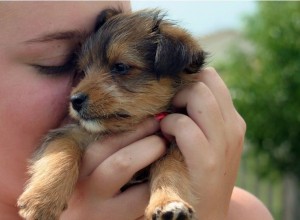 If you leave your dog unattended in the yard, laundry room, garage or kennel, beware! Your dog’s buckle or choke collar could kill! Every year, many dogs meet an untimely death from hanging via their collars.
If you leave your dog unattended in the yard, laundry room, garage or kennel, beware! Your dog’s buckle or choke collar could kill! Every year, many dogs meet an untimely death from hanging via their collars.
If you have more than one dog, play can morph into a tragedy! One dog’s tooth can get caught on the other dog’s collar. It happens very quickly, so even if you watch your dogs play, please protect your dogs with a breakaway collar.
When your dog is exploring an area, unattended, items such as patio furniture, fencing, bar-b-q grills are potential death traps. Don’t let this happen to you. Sit Stay sells a breakaway dog collar, made by Premier Pet Products. Fit your dog with the correct size to keep that rascal safe!
Click on the image to visit Sit Stay and protect your dog or puppy today.

Happy Training!
Alan J Turner
Description: The dog moves through an open door on command, on and off leash.
Function: Teach the dog to move through doors on command.
Prerequisites: Condition a reward marker; “Sit”, “Attention – Without Cue”;
Time: 4 Days
Many of my clients complain that their dogs will not enter and exit their houses on command. The dogs ignore their owners, stand and look at their owners, or run away.
Off leash obedience is an advanced skill, even when the dog is in a fenced area. Before you can expect your dog to obey when he or she is 50 feet away, first you should practice when the dog is on a short leash, then a long line.
There are many reasons a dog might not be motivated to obey. Some dogs may prefer the inside because of the weather outside. If an owner has a history of calling their dog inside, placing the dog in the crate, and leaving the house, the dog may remember and be hesitant to come inside. Other dogs like to chase critters and bark at noises outside.
Regardless of the underlying reasons, training and practice is the solution. I use the “Inside – Outside” game to teach dogs to move through doorways. To play the game, follow these suggestions.
First Day:
Place your dog on a 6 foot leash.
Stand inside your house next to an exit door.
Tell your dog to sit. Praise your dog for the sit.
Tell your dog, “Outside”.
Open the door and walk outside. Don’t pull that rascal through the door. Make some “kissy” noises to charm your dog as you and your dog walk through the door to the outside. Mark the instant he or she passes through the doorway.
Close the door.
Drop the leash.
Toss a treat on the ground outside, several feet away from the door.
Pick up the leash.
Tell your dog to sit. Praise your dog for the sit.
Tell your dog, “Inside”.
Open the door and walk inside. Don’t pull that rascal through the door. Use your voice to charm your dog as you and your dog walk through the door to the inside.
Mark the instant he or she passes through the doorway.
Close the door.
Drop the leash.
Toss a treat on the floor inside, several feet away from the door.
Repeat the sequence 2 more times for a total of 6 trials (3 Outside – 3 Inside) during each practice session. Hold 3 of these practice sessions every day. End each session with a walk, a game of fetch, or any of your dog’s favorite play activities.
Next Day:
Play the Inside – Outside game 3 times each day for a total of 18 trials. Practice at each door you plan to enter and exit with your dog during each session. For example, if you use 2 doors, practice the sequence 2 times at 1 door and 1 time at the other door. If you have 3 doors, practice one sequence at each door.
Third Day:
Stand inside your house next to an exit door to a fenced area, with no leash attached.
Call your dog, using the two-finger target.
Mark the instant your dog touches the target and immediately tell your dog to sit. Praise your dog for the sit.
Tell your dog, “Outside”.
Open the door.
Step into the door opening.
Your dog will pass through the door.
Mark the instant he or she passes through the doorway.
Toss a treat on the ground outside, several feet away from the door.
Close the door. Your dog will be on the outside and you will be on the inside.
Immediately walk outside. Close the door.
Call your dog, using the two-finger target.
Mark the instant your dog touches the target and immediately tell your dog to sit. Praise your dog for the sit.
Open the door and tell your dog, “Inside”.
Step into the door opening. Your dog will pass through the door. Mark the instant he or she passes through the doorway.
Toss a treat on the floor inside, several feet away from the door. Close the door. Your dog will be on the inside and you will be on the outside.
Repeat the sequence 2 more times for a total of 6 trials (3 Outside – 3 Inside) during each practice session. Hold 3 of these practice sessions every day. End each session with a walk, a game of fetch, or any of your dog’s favorite play activities.
Fourth Day:
Fade the marker and the food treat, and reduce your motion of moving into the doorway. When your dog moves through the door, offer verbal praise and toss a ball or a toy instead of a treat. You can step inside or outside with your dog, or not.
Stand inside your house next to an exit door to a fenced area, with no leash attached.
Tell your dog to sit. Praise your dog for the sit.
Tell your dog, “Outside”.
Open the door.
Your dog will pass through the door.
Praise your dog.
Toss a ball or toy outside, several feet away from the door.
Close the door. Your dog will be on the outside and you will be on the inside.
Open the door and walk outside. Close the door.
Tell your dog to sit. Praise your dog for the sit.
Open the door and tell your dog, “Inside”.
Your dog will pass through the door.
Close the door. Your dog will be on the inside and you will be on the outside.
Repeat the sequence 2 more times for a total of 6 trials (3 Outside – 3 Inside) during each practice session. Hold 3 of these practice sessions every day. End each session with a walk, a game of fetch, or any of your dog’s favorite play activities.
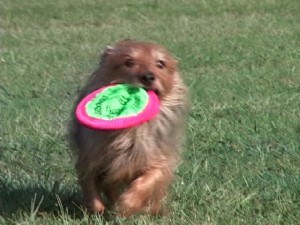 Dogs and puppies pull during walks because, from their points of view, it works. They get to move forward when they feel the pressure of the collar or harness against their bodies. Every time your dog pulls while walking on lead, he or she is learning to pull. The behavior is being fertilized! It will grow and become strong. Yikes!
Dogs and puppies pull during walks because, from their points of view, it works. They get to move forward when they feel the pressure of the collar or harness against their bodies. Every time your dog pulls while walking on lead, he or she is learning to pull. The behavior is being fertilized! It will grow and become strong. Yikes!
There are many methods and tools one might use to teach a dog or puppy to walk nicely on a leash. Many people are content to only “halfway” address the behavior. This is evident by the number of people who use pinch collars, choke collars, Gentle Leader head collars, no-pull harnesses, Weiss Walkie, or any other STOP pulling equipment, forever. Their dogs will not walk nicely unless the threat of discomfort is present via the fitted equipment. The equipment is a condition for “walking nicely” behavior. Without the equipment, the dog pulls. With the equipment, the dog heels by the handler’s side or walks on a loose lead.
What I meant by “halfway” is this: the tools and equipment, just like verbal corrections and jerking the leash, are designed to STOP pulling. That’s okay by me; you can use the equipment forever and your dog will not pull. But, do not confuse that with teaching your dog to walk nicely or to heel. What you have done is convinced your dog to walk nicely by the threat of equipment pressure! My goal is to use the equipment as a temporary aid, while I teach the dog to walk nicely. Then I can use the equipment or not, depending on the environment.
My current favorite tool for controlling an exuberant dog during walks is the Canny Collar.
If you want to discontinue the use of equipment, you have two target goals. One is to STOP the pulling behavior, the other is to START “walking nicely” behavior!
I know what you are thinking, “my dog always pulls on walks; how can I use rewards to increase good behaviors if the dog never ever walks without pulling?”
Glad you asked. Start with the basics. Teach your dog to stand with you on a loose lead, before you teach your dog to walk without pulling.
First you’ll teach your dog to stand near to you, with a loose lead, before you ever start walking. You will teach a command that means, “look towards me, I will pay you!” I call this “Attention on Cue – while standing”.
Next, you will practice “Attention-on-cue” in many different locations, while adding distractions. Then you practice “Attention on Cue – while walking”. Take a step or two with your dog and ask for the look.
Finally you teach your dog “Attention without Cue – while standing”, then “Attention without Cue – while walking”. “Attention without cue” is when your dog checks in or looks at you voluntarily, without any commands or cues from you.
Once your dog has mastered “Attention”, you can start working on loose lead walking or heel. With a bit of time and effort (and the knowledge to teach attention), you can discard your pinch collar, choke collar, Gentle Leader head collar, et cetera!
Visit this page to learn how to teach your dog Attention-on-Cue, While Standing.
Attention-on-Cue, While Walking
After your dog has mastered Attention-on-Cue, While Standing, it’s time to add the distraction of walking.
This skill is a component of “walk-on-loose-lead”. It would be better to play without a leash, in a hall or narrow walkway, until your dog learns the game. Then you can practice in the back yard or on leash in public.
I taught Bentley this behavior on my narrow, front patio walkway. I started the game at the gate, so Bentley had only one direction to walk.
Get some high-value treats. Start at the end of the hall or narrow walkway. Practice “attention-on-cue, while standing”. Perform 2 to 3 trials.
Then somehow get your dog to walk ahead of you as you both start walking. I told Bentley “this way” and started walking forward, but you don’t necessarily need a cue. Just start walking and your dog will probably start walking too.
As soon as your dog is “a dog’s length” ahead, give your attention-on-cue command. Mark the instant your dog turns his or her head towards you.
Walk back to the starting point (end of hall) to deliver the treat. This is called one cycle or trial. The cycle began when you started walking and ended after you delivered the treat.
Repeat, but on the next trial, let your dog get 2 dog lengths ahead before you give the cue.
On the subsequent trials, you’ll increase the distance by one dog length each trial. For example, your dog will be 5 dog lengths ahead before you give the command during cycle 5.
Increase the distance during each trial until your dog will look back towards you when he or he or she is 8-10 feet ahead.
.
The distance change from cycle to cycle can be very small or large. In the example, I used one dog length as starting distance and increased the distance by one dog length each cycle. You might start at one foot or even 1″ . . . whatever it takes to get the behavior.
Once your dog will perform without distractions, ask someone to stand in the hall while you practice. Then ask them to move their arms, tap their feet, sing, et cetera, while you practice. The goal is for them to become just a wee bit more exciting from cycle to cycle.
After your dog has mastered the behavior in the hall or narrow walkway with distractions, move to a different area with different distractions.
Even though your dog performs well inside, with minimal distractions, be prepared to repeat the beginning steps of the exercise whenever you add distractions.
Attention – Without Cue
Attention-without-cue is helpful when you are interacting with the dog and you want the dog to ignore other distractions and stay connected to you. This is a prerequisite for loose lead walking.
Here’s how to teach the dog to stay connected to you.
This exercise places the responsibility of ‘staying connected’ on the dog, not the handler.
Place your dog on a 6 foot leash. Stand quietly in one area. Your dog will sniff and explore. Be patient. Say nothing. Wait until the dog looks at you.
MARK the instant the dog turns his head towards you and then deliver a treat. Repeat until the dog is constantly looking at you. When this occurs, move to a different location a few feet away. The dog will be momentarily distracted. Repeat the process in the new location. Do this in 3 different locations each session. Hold 3 sessions each day for optimal results!
Once the dog gets better at volunteering the look, repeat the process with a longer leash. A longer leash gives the dog more choices of things to explore, which is the next grade or level of distraction.
As you practice this behavior, you can add other distractions like people standing or walking, other dogs, et cetera.
Once your dog is voluntarily checking in while you are standing, wait until your dog is not looking and take a step or two. If he or she moves with you or turns towards you, mark the instant he starts to move. This is a great way to begin teaching your dog to walk nicely on a lead.
Happy Training!
Alan J Turner – Companion Animal Behavior Counselor & Trainer, Canine Specialization
Private and Group Dog Training in Memphis TN
Owner: How’s Bentley